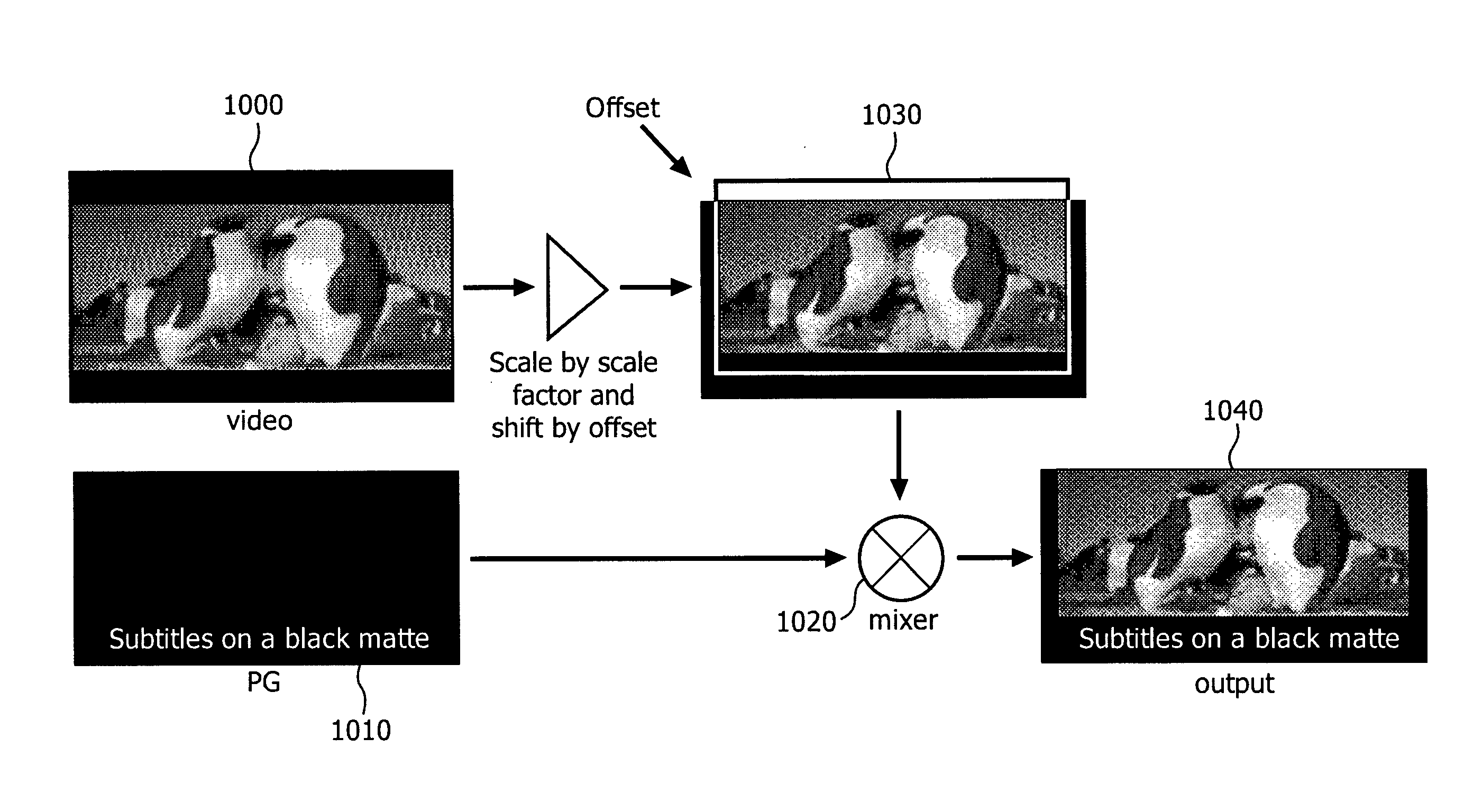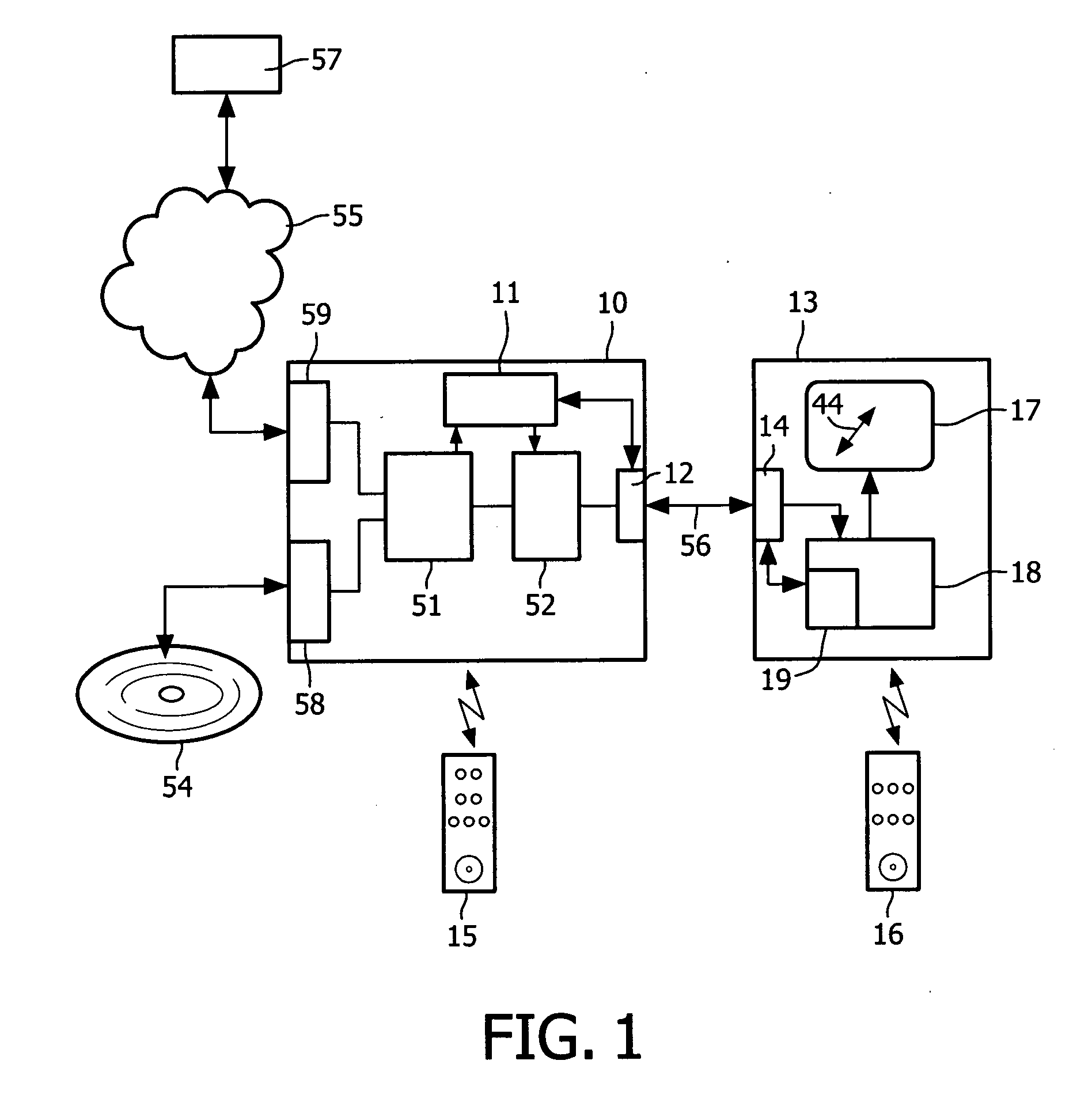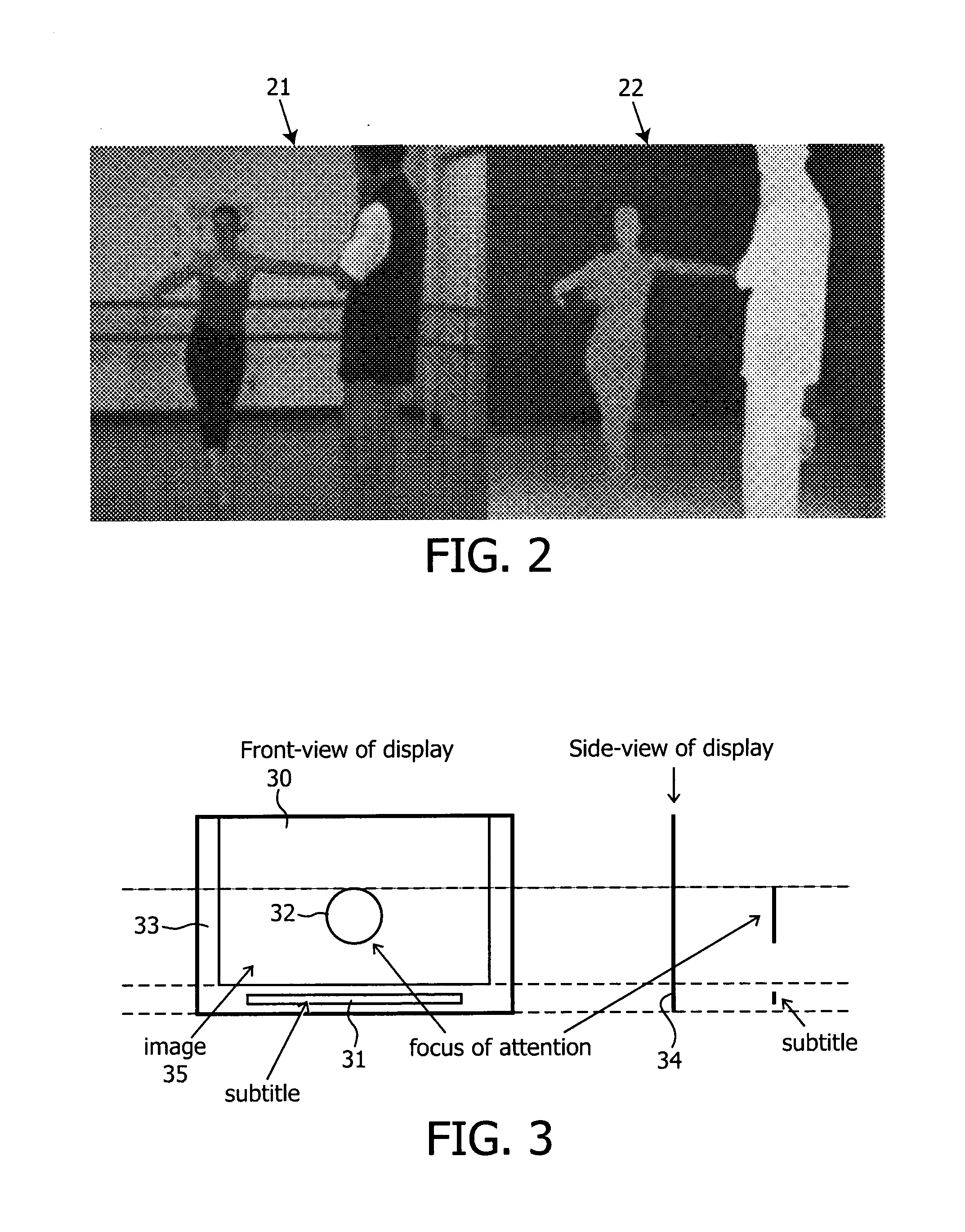Combining 3D image and graphical data
a technology of graphical data and image data, applied in the field of combining three-dimensional 3d image data and auxiliary graphical data, can solve the problems of viewers in practice not understanding the close position of subtitles, tend to be very close to the viewer, etc., and achieve the effect of reducing the size of image data and smoothing the depth differen
- Summary
- Abstract
- Description
- Claims
- Application Information
AI Technical Summary
Benefits of technology
Problems solved by technology
Method used
Image
Examples
Embodiment Construction
[0033]FIG. 1 shows a system for displaying three dimensional (3D) image data, such as video, graphics or other visual information. A 3D source device 10 is coupled to a 3D display device 13 for transferring a 3D display signal 56. The 3D source device has an input unit 51 for receiving image information. For example the input unit device may include an optical disc unit 58 for retrieving various types of image information from an optical record carrier 54 like a DVD or BluRay disc. Alternatively, the input unit may include a network interface unit 59 for coupling to a network 55, for example the internet or a broadcast network, such device usually being called a set-top box. Image data may be retrieved from a remote media server 57. The source device may also be a satellite receiver, or a media server directly providing the display signals, i.e. any suitable device that outputs a 3D display signal to be directly coupled to a display unit.
[0034]The 3D source device has an image proce...
PUM
 Login to View More
Login to View More Abstract
Description
Claims
Application Information
 Login to View More
Login to View More - R&D
- Intellectual Property
- Life Sciences
- Materials
- Tech Scout
- Unparalleled Data Quality
- Higher Quality Content
- 60% Fewer Hallucinations
Browse by: Latest US Patents, China's latest patents, Technical Efficacy Thesaurus, Application Domain, Technology Topic, Popular Technical Reports.
© 2025 PatSnap. All rights reserved.Legal|Privacy policy|Modern Slavery Act Transparency Statement|Sitemap|About US| Contact US: help@patsnap.com



